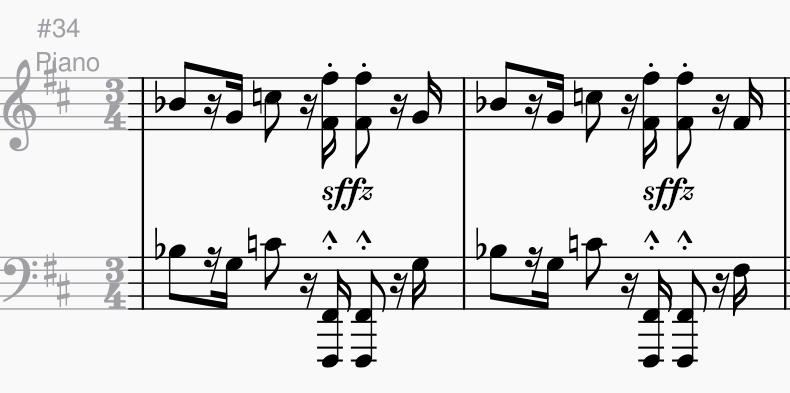How to mark the passages
Sforzando and related markings apply only to individual notes, so the single sffz on two adjacent notes within the same measure is technically incorrect, and I personally would find it confusing. Consider a sub ff followed by a separate marking to return to the prevailing dynamic. That would be unambiguous, especially with the other articulation marks present.
Where the two notes are in separate measures, two sffz markings will be aesthetically fine and clear to read; however, for clarity use the same markings in both parts of the score. That is, if you use sffz in one place, use it in both; likewise with sub ff; but use one or the other, not both.
Duration of sforzando and related markings
Regarding the sffz applying to a full beat — this is not a rule or guideline I've encountered, nor can I find evidence to suggest that interpretation. Here is what Wikipedia has to say on the subject:
Subito can be used to mark suddenly louder changes, like subito forte sf, or subito fortissimo sff, however in these cases it's usually only used to add a particular amount of accent to one note or chord. If subito is used to note a sudden change to an entire louder passage, something like sub. f or sub. ff should be used to leave out any ambiguity.
Forzando/forzato indicates a forceful accent and is abbreviated as fz. To emphasize the effect, it is most often preceded with subito as sfz (subito forzato/forzando, sforzando/sforzato). How these should be interpreted and played in the music is up to the judgement of the performer, but a rule of thumb is that a forzato/forzando can be considered as a variation on marcato while subito forzando/forzato can be considered a variation on marcato with added tenuto.
The Oxford Online Music Dictionary doesn't comment on the duration of a sfortissimo, but Dolmetsch backs up the single-note/chord idea.
sf.: abbreviation for sforzato, applied to a single accented note
Dolmetsch entries for related terms aren't specific about duration, but the above seems to be the ruling entry.



